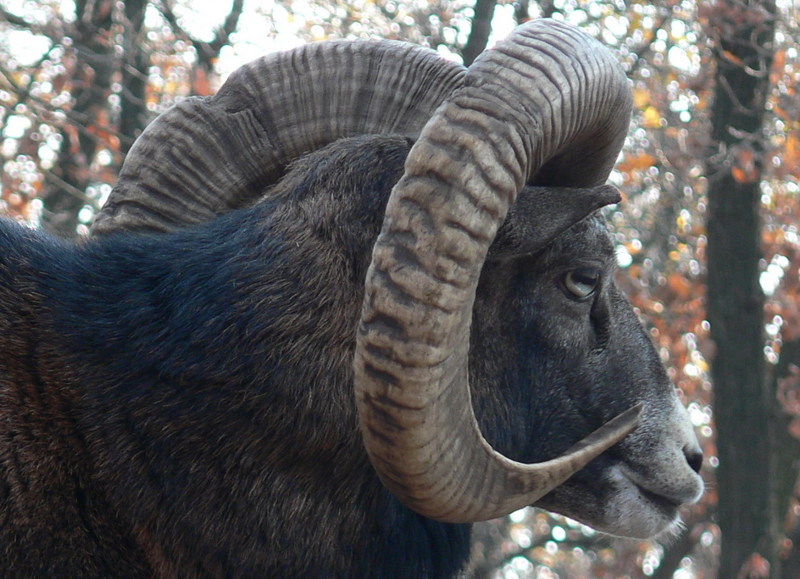|
| Query: domestic sheep | Result: 9th of 69 | |
Mouflon (Ovis musimon, Ovis ammon, Ovis gmelini, or Ovis orientalis) - Wiki
| Subject: | Mouflon (Ovis musimon, Ovis ammon, Ovis gmelini, or Ovis orientalis) - Wiki
| |

| Resolution: 1313x950
File Size: 366315 Bytes
Date: 2005:11:19 13:37:49
Camera: DMC-FZ5 (Panasonic)
F number: f/2.8
Exposure: 10/600 sec
Focal Length: 310/10
Upload Date: 2007:09:25 18:51:13
|
Mouflon
From Wikipedia, the free encyclopedia
[Photo] A Mouflon in Hungary (Ovis musimon). European Mouflon (Wild Sheep), Ovis musimon at Budakeszi Wildlife Park. Photo credit: Peter Halasz. (http://en.wikipedia.org/wiki/User:Pengo). Copyright (C) Peter Halasz
Permission is granted to copy, distribute and/or modify this document under the terms of the GNU Free Documentation License, Version 1.2 or any later version published by the Free Software Foundation; with no Invariant Sections, no Front-Cover Texts, and no Back-Cover Texts. A copy of the license is included in the section entitled "GNU Free Documentation License". |
The Mouflon is a species of wild sheep and as such is one of the Caprinae or “goat antelopes”. It is thought to be one of the two ancestors for all modern domestic sheep breeds. It is red-brown with a dark back-stripe, light colored saddle patch and underparts. The males are horned and the females are horned or polled.
They originated in Southwest Asia, home to the species known as the “Asiatic mouflon” (Ovis orientalis). Mouflon were introduced to the islands of Corsica, Sardinia, Rhodes, and Cyprus during the neolithic period, perhaps as feral domesticated animals, where they naturalized to the mountainous interiors of these islands over the past few thousand years, giving rise to the species known as European mouflon (O. musimon or O. ammon). They are now rare on the islands and classified as vulnerable by the IUCN, but have been successfully introduced into central Europe, including Germany, Austria, the Netherlands, the Czech Republic, Slovakia, Hungary, Bulgaria, and Romania, and even in some northern European countries such as Finland. Since the 1980s, Mouflons have been introduced successfully in game ranches in North America for the purpose of hunting; however in game ranches pure breeds are rare, as they interbred with other species introduced for the same purpose, like Barbado(s) Sheep, Corsican sheep, Painted Desert Sheep, Texas Dall Sheep or Four Horned Sheep (Jacob's Sheep). As a result, Europe and Asia Minor present the only wild populations of purebred animals.
A mouflon was cloned successfully in early 2001 and lived at least seven months, making it the first clone of an endangered mammal to survive beyond infancy. This demonstrates that a common species (in this case, a domestic sheep) can successfully provide a surrogate for the birth of an exotic animal like the mouflon. If cloning of the mouflon can proceed successfully, it has the potential to expand the species' gene pool and reduce strain on the number of living specimens.
The scientific classification of the Mouflon is disputed, but the European Mouflon may be considered as either Ovis musimon or Ovis ammon musimon.
Other names: Αγριν?? (Greek), Muflon (Czech), Muflon (Polish), Muflone (Italian), Corsican Mouflon, European Mouflon, Musimon, Musmon, Sardinian Mouflon, Moufflon.
Trivia
The Mouflon is featured on the symbol of Cyprus Airways, as well as on the Cypriot 1, 2, and 5 cent Euro coins.
http://en.wikipedia.org/wiki/Mouflon
| The text in this page is based on the copyrighted Wikipedia article shown in above URL. It is used under the GNU Free Documentation License. You may redistribute it, verbatim or modified, providing that you comply with the terms of the GFDL. |
|
^o^
Animal Pictures Archive for smart phones
^o^
|
|

